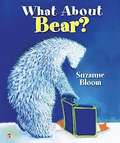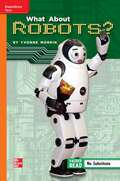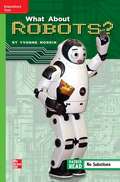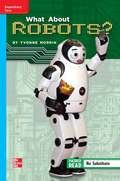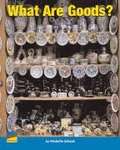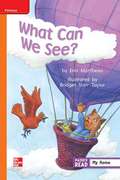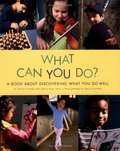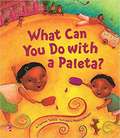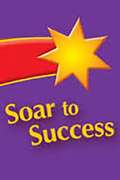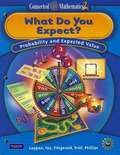- Table View
- List View
More NIMAC books are available at www.nimac.us. If you find your title in the NIMAC and not in Bookshare then please contact us to request it.
What a Pain! (Fountas & Pinnell Classroom, Guided Reading)
by Michelle OlmstedNIMAC-sourced textbook. Why It Hurts to Get Hurt. There's a reason why you feel pain. Learn why it hurts so much when you bite your tongue or burn your finger.
What a Shop! (Reach Into Phonics Ser.)
by Dee Wallis Kelsey Bruce Deborah J. ShortNIMAC-sourced textbook
What Are Goods?
by Michelle Schaub Vicki Rushworth David HaggertyIn this book, learn what goods are, where they come from, and how they are transported to stores.
What Can We See? [Approaching Level, Grade 1]
by Erin Matthews Bridget Starr TaylorNIMAC-sourced textbook
What Can You Do?
by Linda Lott Ginger NielsonThe fun and excitement of English and Language Arts learning continues in Grade 2 of Reading Street. This comprehensive and dynamic curriculum for homeschooling is geared toward young children who have some foundational English and Language Arts knowledge and are ready to strengthen their skills. Comprised of engaging activities, challenging content and weekly quizzes, Reading Street: Grade 2 is the next step in your child's path toward becoming a lifelong learner and reader. As with all Reading Street products, the Grade 2 system is formatted to help students meet certain age-appropriate goals. After completing this English and Language Arts homeschool program, your child should be able to: Read and comprehend two-syllable words. Identify common prefixes (such as pre-, un-, or re-) and suffixes (such as -able, -ad and -er). Correct mistakes made when reading out loud. Read books with two or more chapters. Understand the structure of stores (i. e. beginning, middle and end). Start selecting reading materials based on his/her own interests. Identify the "who," "what," "when," "where," "why" and "how" of the text. While the goals of second Grade English and Language Arts are numerous, Reading Street will help you craft engrossing lessons. Your child will garner important English and Language Arts skills while completing a workbook, reading stories and poems, and taking assessments. Planning these lessons will be easier than ever, as all Reading Street systems are broken down into weekly Big Ideas. All the work your child does on a given week is formulated around that single concept for an organized and challenging curriculum. With six easy-to-follow units, Reading Street: Grade 2 is the perfect tool for homeschooling parents. Your child will enjoy the reading selections and activities, and you'll love to see your student growing into a knowledgeable individual. We're confident that this product is the right one for you. For more information on the specific materials found in Grade 2 of Reading Street, check out the Features and Benefits page.
What Can You Do?: A Book About Discovering What You Do Well (Into Reading, Read Aloud Module 10)
by Shelley Rotner Sheila KellyNIMAC-sourced textbook <P><P>What Can You Do? is a book to help children discover their own special talents. Inspired by Dr. Howard Gardner's Frames of Mind, in which he outlines seven different kinds of intelligence, the book helps children realize that succes comes in many forms. While one child might excel in mathematics, another might shine as an actor or a painter. The top reader in the class may not be a good skier, and vice versa. The authors hope to offer children and the adults who care for them a chance to think and talk about ways children have met with success or difficulty in using their abilities, and to help them recognize that one ability is not better than another. This understanding will encourage children to seek help with their challenges and to delight in their strengths.
What Can You Do with a Paleta? (Elementary Core Reading)
by Carmen Tafolla Magaly MoralesNIMAC-sourced textbook
What Do You Do When Something Wants To Eat You?: Soar To Success Student Book Level 3 Wk 8
by Steve JenkinsA hungry wolf's attempts to fatten a chicken for his stewpot have unexpected results. NIMAC-sourced textbook
What Do You Expect: Probability and Expected Value (Texas)
by Glenda Lappan James T. Fey William M. Fitzgerald Susan N. Friel Elizabeth Difanis Phillips WestWords Inc.NIMAC-sourced textbook
What Do You Expect?: Probability and Expected Value
by Glenda Lappan Elizabeth Difanis Phillips James T. Fey Susan N. FrielNIMAC-sourced textbook

